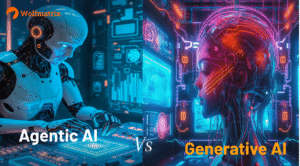Artificial Intelligence (AI) isn’t just transforming Silicon Valley; it’s revolutionizing how educational institutions function, teach, and manage. While its role in enhancing educational outcomes is widely discussed, AI in education is also quietly reshaping operational costs and budget efficiencies in schools and universities across the globe.
According to MarketsandMarkets, the global AI in education market is projected to reach $20 billion by 2026, up from $3.68 billion in 2021. Institutions that adopt AI early are experiencing smarter workflows, increased retention, and reduced costs. Here are five strategic ways AI is making a financial difference in education.
1. Automating administrative tasks to Save Payroll Costs
Administrative overhead eats up a significant portion of school budgets. Roles such as admissions officers, front-desk administrators, or attendance coordinators can now be augmented or replaced by AI-powered chatbots, virtual assistants, and automated scheduling systems.
“AI will allow humans to focus on creativity and strategic work while leaving repetitive tasks to machines.” — Sam Altman, CEO of OpenAI
By 2026, over 60% of schools in developed nations are expected to use automation to streamline routine tasks. This shift enables institutions to reallocate resources toward academic excellence and student support. Learn how AI automates admin work.
2. Energy Efficiency Through AI-Powered Infrastructure Management
AI in education isn’t limited to the classroom. Smart campuses are leveraging AI-integrated IoT devices to regulate lighting, heating, and cooling systems based on occupancy and weather data. This technology significantly reduces energy bills.
A pilot at the University of British Columbia revealed that AI-driven energy systems reduced energy consumption by 25%, saving $150,000 annually. As sustainability becomes a focus, AI-based building management is set to rise, especially in climate-conscious U.S. states.
3. Predictive Analytics for Budget Optimization
Inefficient spending on courses, staff, and facilities often stems from poor forecasting. With AI-powered predictive analytics, institutions can anticipate enrollment trends, dropout risks, and resource requirements.
By 2026, over 50% of higher education institutions worldwide will use predictive analytics to improve curriculum planning, faculty hiring, and budgeting decisions. Leveraging AI in education this way can save millions by preventing resource wastage.
4. Boosting Retention and Revenue Through Early Intervention
Student attrition is not just an academic concern but a financial one. Every dropout means lost tuition, underutilized facilities, and reduced institutional reputation. AI tools like Knewton and Squirrel AI track real-time performance, flagging at-risk students before it’s too late.
For example, the University of Florida implemented AI-powered retention alerts and saw a 7% rise in student retention—translating to $1.2 million in preserved tuition revenue.
“Retention is where AI shines by spotting patterns and giving educators a chance to step in early.” — Sal Khan, Founder of Khan Academy
By 2026, it is expected that more than 70% of global universities will adopt similar early-intervention AI models to stabilize enrollment and secure consistent revenue.
5. Personalized Learning reduces the cost of Academic Support
AI-powered learning platforms like Century Tech and Carnegie Learning deliver customized content based on individual learning styles and progress. This level of personalization minimizes the need for extra tutoring, special classes, or intervention programs.
Why This Matters for U.S. Educational Startups and Institutions?
For startups and schools in the U.S. education sector, AI in education offers a strategic way to stay competitive while cutting down expenses. With tightening budgets, teacher shortages, and increasing demands for personalized learning, AI offers scalable, affordable, and smart solutions.
The best time to Adopt AI is Now
The era of manual inefficiencies in education is ending. As AI becomes more intelligent and accessible, early adopters will enjoy cost savings, better learning outcomes, and stronger institutional sustainability.
Explore how your institution can implement AI solutions today. Contact Wolfmatrix for a customized AI roadmap for education.




